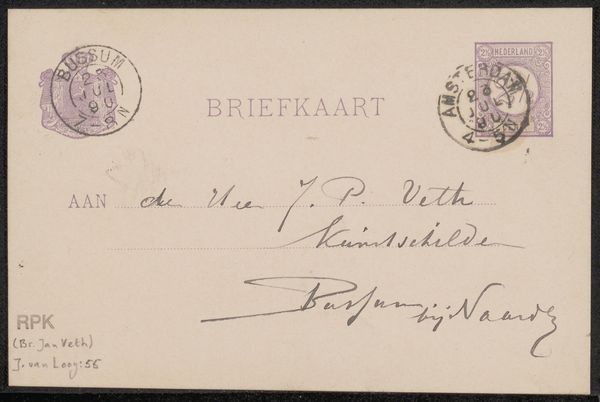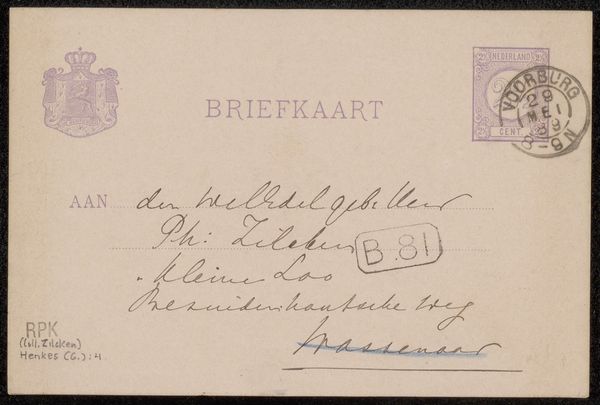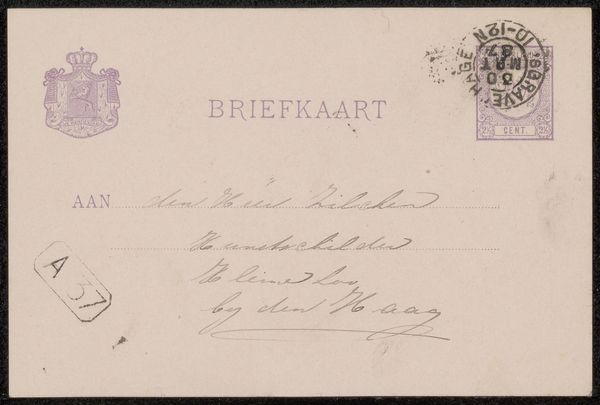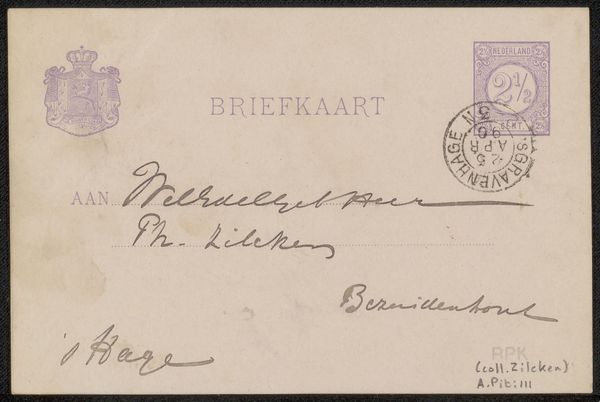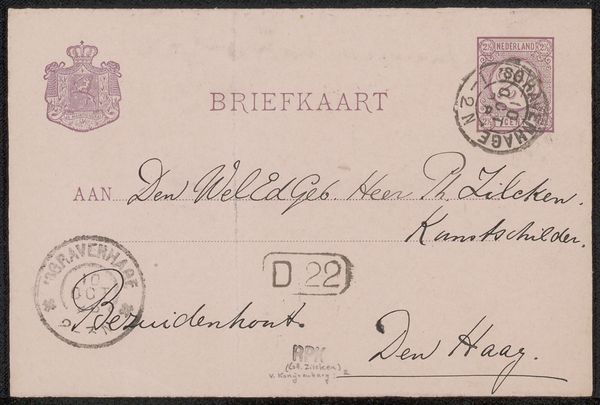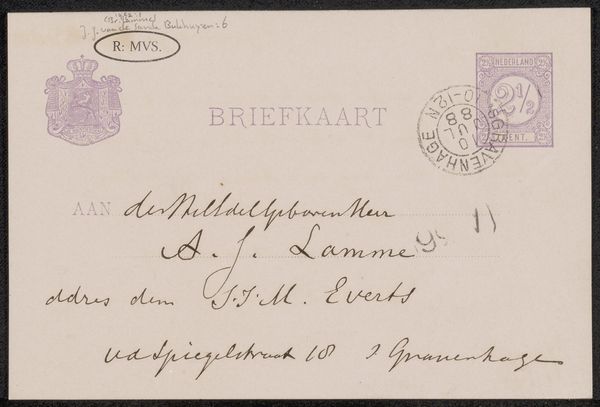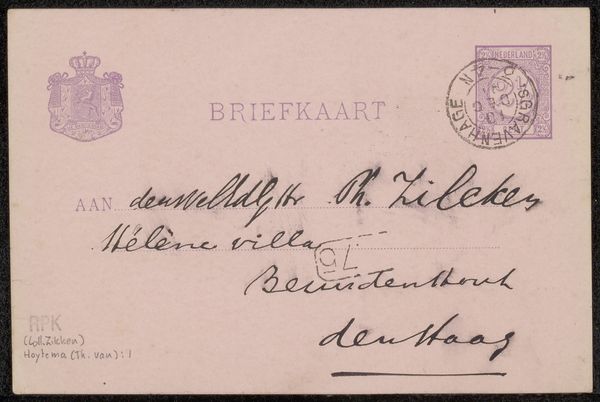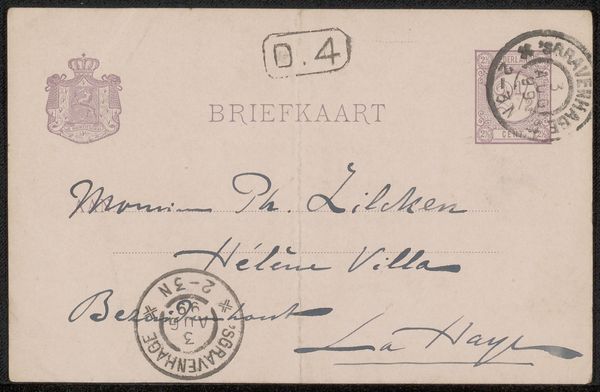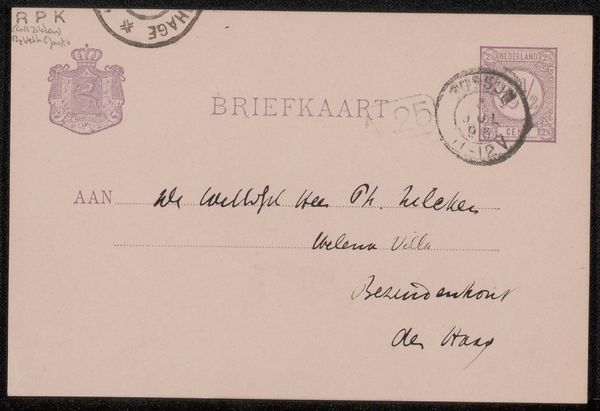
drawing, graphic-art, ink, pen
#
drawing
#
graphic-art
#
pen sketch
#
ink
#
ink drawing experimentation
#
pen work
#
pen
#
post-impressionism
Copyright: Rijks Museum: Open Domain
Curator: This delicate ink drawing, "Briefkaart aan Philip Zilcken," penned by Theo van Hoytema, likely between 1896 and 1898, offers us a fascinating glimpse into a postal exchange of the era. Editor: My first thought? Melancholy. It’s muted, fragile...like a forgotten whisper through time. The cursive feels like elegant, slightly unsteady dance. Curator: The inscription adheres to a strict structural layout, employing typography to denote sections like recipient details. Observe how the varying weights of the lines contribute to a hierarchy of information on a deliberately blank canvas. Editor: Blankness here feels intentional. The sparseness amplifies the handwritten message. Makes me wonder... what untold stories are locked inside those formal address lines? It hints at untold dialogues, the absence speaking volumes. Curator: Van Hoytema uses the pen’s calligraphic capacity to express both precision and flair. See the contrast between the almost industrial font used to write "BRIEFKAART", a visual anchor against the artist’s organic handstyle. It could suggest a dialogue between modern and traditional sensibilities. Editor: Right, a dance indeed! I feel a longing here too, perhaps born from seeing words carefully sent... now, immediate connection numbs our need for such intimate material contact. Almost makes this artwork a sad archaeological find. Curator: I think we should note the material quality—ink on paper —reveals how dependent this art is on the physical reality of correspondence; the postal stamps becoming textural elements on the whole, too, are indicative of a time before our purely digital world. Editor: Agreed. This isn’t just ink on paper. It’s a time capsule. I now feel honored to peek behind those closed doors. Curator: Its unassuming medium actually allows it a deeper form of engagement because its simplicity evokes a lost sensory encounter. It underscores that this is more than simple function: here it is memory inscribed through everyday material. Editor: Well said. Thank you, Theo, for mailing this ghost of a feeling down to us!
Comments
No comments
Be the first to comment and join the conversation on the ultimate creative platform.
